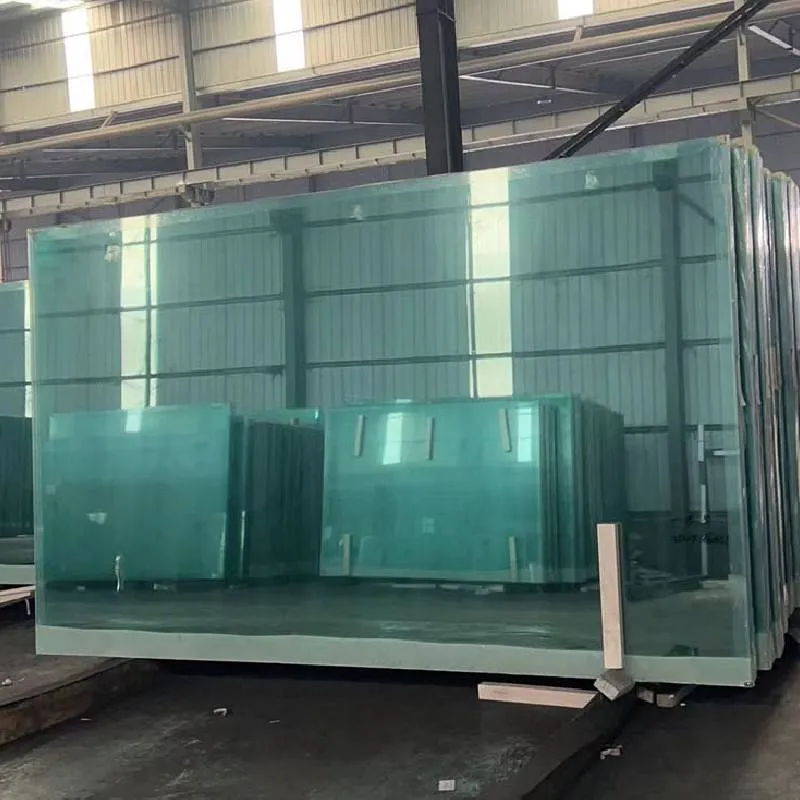Laminated Glass vs. Tempered Glass Key Differences and Applications
When it comes to modern construction and design, glass plays a pivotal role not only aesthetically but also functionally. Among the various types of glass available, laminated glass and tempered glass are two of the most popular choices, each with unique properties that suit different applications.
Laminated Glass Structure and Benefits
Laminated glass consists of at least two layers of glass bonded together by a durable interlayer, typically made of polyvinyl butyral (PVB). This interlayer is sandwiched between the glass layers, providing several advantages
1. Safety One of the primary benefits of laminated glass is its safety features. If broken, the glass fragments adhere to the interlayer rather than shattering into sharp pieces. This characteristic makes laminated glass an ideal choice for areas where safety is a priority, such as in skylights, glass doors, and railings.
2. Sound Insulation The interlayer in laminated glass significantly enhances sound insulation. It reduces noise transmission, making it a popular option for buildings in busy urban areas or near highways.
3. UV Filtering Laminated glass can block up to 99% of harmful UV rays from the sun. This property helps in protecting interiors from fading, contributing to the longevity of furnishings and artwork.
4. Security Laminated glass is harder to penetrate compared to regular glass, providing an additional layer of security for homes and commercial properties.
Tempered Glass Strength and Performance
laminated glass and tempered glass
Tempered glass, also known as toughened glass, is produced through a process of extreme heating followed by rapid cooling. This thermal treatment makes it much stronger than regular glass, with several notable features
1. Increased Strength Tempered glass is about five to six times stronger than standard glass of the same thickness. This characteristic makes it suitable for applications subject to high stress, such as glass doors and shower enclosures.
2. Safety Upon Breakage While tempered glass is strong, it can shatter into small, blunt pieces rather than sharp shards when broken, reducing the risk of injury. However, once it breaks, the entire panel is lost, unlike laminated glass that retains its integrity due to the interlayer.
3. Thermal Resistance The manufacturing process enhances the glass's ability to withstand extreme temperature changes, making it suitable for use in applications like glass cooktops and various facades.
4. Versatile Applications Tempered glass is used in a wide range of contexts, from building facades to car windows and even in furniture design, thanks to its strength and aesthetic appeal.
Conclusion Choosing the Right Type of Glass
When deciding between laminated glass and tempered glass, it is essential to consider the specific needs of a project. If safety and sound insulation are primary concerns, laminated glass is often the better choice. On the other hand, for applications requiring higher strength and thermal resistance, tempered glass is more suitable.
Ultimately, both types of glass offer unique benefits that can enhance any architectural project. By understanding their properties and ideal applications, builders, designers, and homeowners can make informed decisions to achieve both safety and aesthetic goals in their spaces. Whether for residential homes, commercial buildings, or automotive needs, understanding the differences between laminated and tempered glass empowers better choices in design and functionality.
 Afrikaans
Afrikaans  Albanian
Albanian  Amharic
Amharic  Arabic
Arabic  Armenian
Armenian  Azerbaijani
Azerbaijani  Basque
Basque  Belarusian
Belarusian  Bengali
Bengali  Bosnian
Bosnian  Bulgarian
Bulgarian  Catalan
Catalan  Cebuano
Cebuano  Corsican
Corsican  Croatian
Croatian  Czech
Czech  Danish
Danish  Dutch
Dutch  English
English  Esperanto
Esperanto  Estonian
Estonian  Finnish
Finnish  French
French  Frisian
Frisian  Galician
Galician  Georgian
Georgian  German
German  Greek
Greek  Gujarati
Gujarati  Haitian Creole
Haitian Creole  hausa
hausa  hawaiian
hawaiian  Hebrew
Hebrew  Hindi
Hindi  Miao
Miao  Hungarian
Hungarian  Icelandic
Icelandic  igbo
igbo  Indonesian
Indonesian  irish
irish  Italian
Italian  Japanese
Japanese  Javanese
Javanese  Kannada
Kannada  kazakh
kazakh  Khmer
Khmer  Rwandese
Rwandese  Korean
Korean  Kurdish
Kurdish  Kyrgyz
Kyrgyz  Lao
Lao  Latin
Latin  Latvian
Latvian  Lithuanian
Lithuanian  Luxembourgish
Luxembourgish  Macedonian
Macedonian  Malgashi
Malgashi  Malay
Malay  Malayalam
Malayalam  Maltese
Maltese  Maori
Maori  Marathi
Marathi  Mongolian
Mongolian  Myanmar
Myanmar  Nepali
Nepali  Norwegian
Norwegian  Norwegian
Norwegian  Occitan
Occitan  Pashto
Pashto  Persian
Persian  Polish
Polish  Portuguese
Portuguese  Punjabi
Punjabi  Romanian
Romanian  Russian
Russian  Samoan
Samoan  Scottish Gaelic
Scottish Gaelic  Serbian
Serbian  Sesotho
Sesotho  Shona
Shona  Sindhi
Sindhi  Sinhala
Sinhala  Slovak
Slovak  Slovenian
Slovenian  Somali
Somali  Spanish
Spanish  Sundanese
Sundanese  Swahili
Swahili  Swedish
Swedish  Tagalog
Tagalog  Tajik
Tajik  Tamil
Tamil  Tatar
Tatar  Telugu
Telugu  Thai
Thai  Turkish
Turkish  Turkmen
Turkmen  Ukrainian
Ukrainian  Urdu
Urdu  Uighur
Uighur  Uzbek
Uzbek  Vietnamese
Vietnamese  Welsh
Welsh  Bantu
Bantu  Yiddish
Yiddish  Yoruba
Yoruba  Zulu
Zulu 

